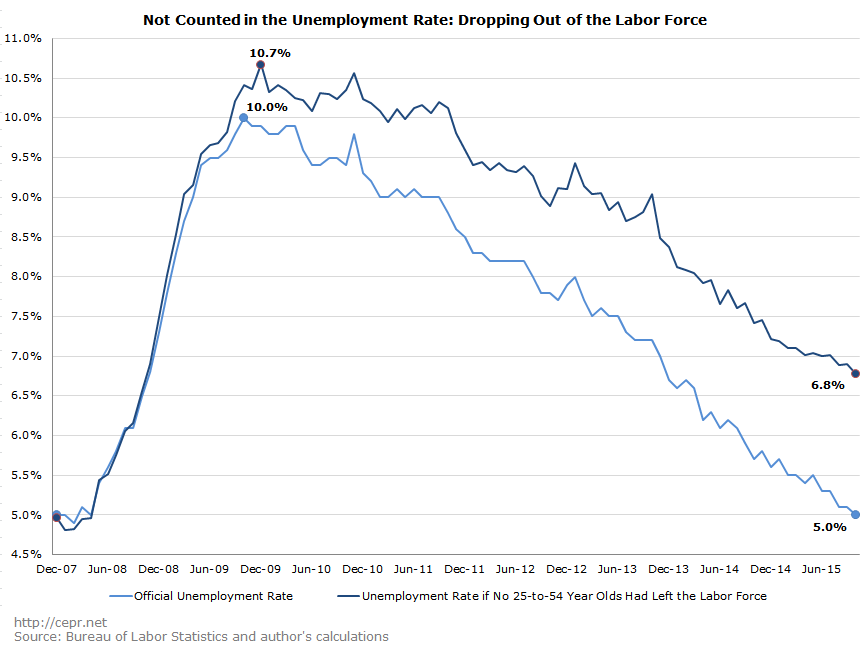November 10, 2015
The latest jobs report from the Bureau of Labor Statistics shows that the unemployment rate fell to 5.0 percent last month. This is the same rate as from the beginning of the recession in December 2007, and is also the CBO’s estimate of the long-term natural rate of unemployment.
There’s good reason to think that the unemployment rate is overstating the strength of today’s economy. This is because people only count as unemployed if they have actively searched for work within the past four weeks. If workers become discouraged over their job prospects and stop looking for work, the unemployment rate falls. A better measure of the labor market wouldn’t show the economy gaining strength due to the fact that workers were becoming depressed with their job prospects.
One way of correcting for this problem is to ask what the unemployment rate would be if people hadn’t given up the search for work. Normally, we’d expect people to not be working if they are older and retired or young and in school. However, there’s little reason to think that people aged 25 to 54 should have suddenly stopped searching for work for any reason other than discouragement over job prospects.
The graph below shows the unemployment rate from December 2007 to the present. It also shows what the unemployment rate would be if all the prime-age civilians who stopped searching for work were counted as “unemployed.” Under the latter scenario, the unemployment rate today would be 6.8 percent, not 5.0 percent:

This indicates that while the unemployment rate is 5.0 percent, the labor market is considerably weaker than would ordinarily be associated with that number.






